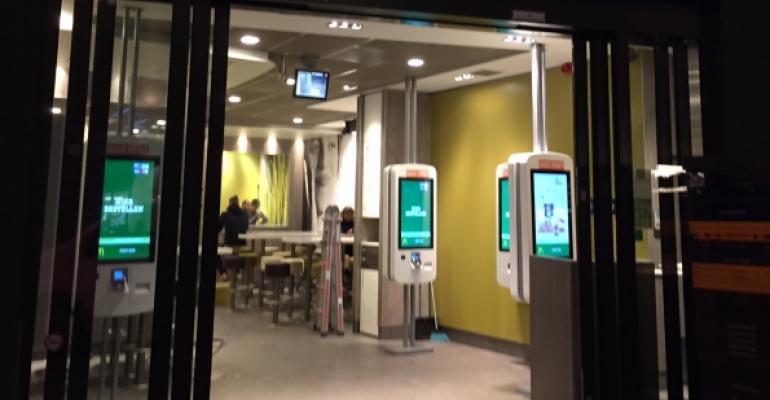 This post is part of the On the Margin blog.
This post is part of the On the Margin blog.
Labor costs have become a major concern for the restaurant industry. As we’ve been exploring in these pages, the higher costs are coming from many different trajectories:
Higher minimum wages, including the first statewide $15 minimum in California.
New regulations that will likely increase the amount of overtime companies will have to pay.
Lower unemployment that is increasing competition for labor and driving costs up.
All of this is likely to increase the use of technology in the industry as operators look to ease their costs.
That is a good thing.
The restaurant industry is sensitive to two major cost issues: food and labor. And, absent a major recession, one or both of those are causing problems for the industry at any given time.
There’s only so much the industry can do about food costs. But restaurants do need to improve the efficiency of their operations so they’re not so exposed to increases in the minimum wage or to overtime regulations.
At the NRA Show last year, Hudson Riehle, head of the research and knowledge group at the National Restaurant Association, noted that restaurants average $84,000 in sales per worker.
By comparison, grocers average $304,000 in sales per employee. Gas stations average $855,000 in sales per worker.
Both grocers and convenience stores are getting increasingly competitive with their prepared food offerings. Rising labor costs will only give them an additional advantage, as they won’t have to raise prices to the extent that restaurants will need to in the coming years.
Stephen Anderson, analyst with Maxim Group, believes restaurants will have to increase prices 60 to 140 basis points just to cover mandated wage increases.
But he also believes that restaurant companies will invest more in technology in the form of kiosks, online and mobile ordering and staff management software just to offset these higher costs.
He’s not the only one who thinks technology is coming to save the labor day. Andy Puzder, CEO of CKE Restaurants, operator of Hardee’s and Carl’s Jr., wrote recently in the Wall Street Journal that higher mandated costs will force a technological transition in the restaurant industry.
There’s no question the industry is more willing now to invest in customer-facing technology than perhaps it ever has. Casual-dining chains are adding tabletop tablets; chains like McDonald’s Corp. and Panera Bread Inc. are investing in kiosks; mobile ordering and payment have become a must-have at many concepts.
The goal of much of this transition is not on saving labor but on improving the customer experience. Panera wants to serve more people. McDonald’s kiosk effort actually increases labor and is designed to add a higher-end experience. Casual dining kiosks eliminate the “pain point” of waiting to pay a bill.
Still, it wouldn’t take much for some of these efforts to be expanded into labor-saving strategies.
All that said, it remains to be seen how consumers would react to the idea: Only 10 percent of consumers told AlixPartners in a survey that technology should be a top-three priority for the industry. Consumers want service and food and thus the need for technology might be overstated.
But if the industry can find a way to use technology to improve the experience and save on labor by making their operations more efficient, that would make restaurants more competitive.
Contact Jonathan Maze at [email protected]
Follow him on Twitter: @jonathanmaze

